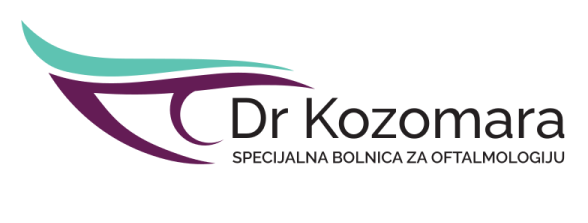ARE YOU READY FOR A NEW VIEW OF THE WORLD?
Laser vision correction is a surgical procedure practiced for over 40 years and chosen by over 50
million people worldwide for correction of refractive errors of the eye. If you asked some of
these patients today, a vast majority would agree that they mark the time before and after the
surgery, at least regarding their vision quality.
There’s no need for fear, as all techniques of this surgical procedure are computer-controlled with
the help of precise software programs. This computer and laser precision, combined with our
doctors’ experience, guarantees a safe surgical procedure.
Today’s lasers can correct diopters from -9 to +5, and ±5 diopters of astigmatism, meaning that
practically 95% of people with refractive eye anomalies are candidates for the surgery. For
patients with higher diopters, other methods are available, primarily phakic intraocular lens
implantation. Results of this procedure are equal to those of laser vision correction (often even
better for people with high diopters because lenses improve image quality).
Methods of laser vision correction
In the last twenty years, a lot of work has been done to improve techniques for laser vision
correction. Among all of them, PRK and LASIK have remained the most popular due to
procedure evolution, numerous scientific research, and technological advancements, with Femto
LASIK added to them.
PRK
Photorefractive Keratectomy (PRK) is the first technique of laser vision correction ever applied
to the human eye. This method is based on removing the epithelium (the corneal surface) with a
laser (Transepithelial PRK; T-PRK) and correcting refractive error by ablating (micro-
remodeling) the eye’s corneal stroma.
This method is suitable for corrections up to -4 diopters of the sphere and up to -1.50 diopters of
the cylinder, while it is not recommended for + (hyperopic) vision corrections. It is primarily
advised for patients who have thin corneal tissue and for whom other methods of correction are
not recommended.
The downside of this method is a slightly longer postoperative recovery. The regeneration of the
corneal epithelium, removed during the surgery, lasts up to 10 days, which can cause a feeling of
blurred vision, eye scratching, and tearing.
LASIK
The most popular and most frequently used method of laser vision correction currently is Laser-
Assisted In Situ Keratomileusis (LASIK). This method is used in over 95% of cases, making it
irreplaceable in laser refractive eye surgery.
Unlike the PRK, the LASIK method does not damage the epithelium but instead creates a so-
called flap, or “lid,” on the cornea’s surface with a knife or laser. The flap is lifted from the
cornea, the stroma is remodeled with a laser, and the flap is put back in its place.
Because of this method, LASIK can correct myopia up to -9, hyperopia up to +5, and
astigmatism up to ±5 diopters.
Another advantage is significantly faster postoperative recovery. Patients can return to most of
their everyday activities 1-2 days after the procedure, and there’s practically no pain, blurred
vision, or tearing of the eye.
Femto LASIK
During the LASIK method, as mentioned earlier, a flap or lid is created on the surface of the
eye’s cornea. The difference between regular LASIK and Femto LASIK is precisely in the way
the flap is created.
Classic LASIK method uses microkeratome blade. On the other hand, in Femto LASIK, the flap
is created with a femto laser, meaning that the laser makes the cut and creates the flap. There’s
still a lot of debate about whether there’s a significant difference between the LASIK and Femto
LASIK methods. Whichever method is chosen, in the hands of an experienced surgeon, each will
undoubtedly be safe and efficient.
Preoperative examination and consultations
Before each laser vision correction surgery, a detailed examination of the front and the back of
the eye is conducted, with particular attention to the cornea. The exact visual acuity and
refractive error are determined, after which a detailed review of the cornea, lens, and ocular
background is conducted. The cornea’s thickness, curvature, any irregularities, as well as
potential scars that may affect the final decision about the surgery are analyzed in detail with
special diagnostic procedures.
After the completion of the exam, the patient is informed about the condition of both eyes,
surgical possibilities, and the course of the chosen procedure together with the postoperative
recovery. The decision about the surgery is always conducted between the patient and the doctor.
A course of the surgery
Before the surgery, the eyes are anesthetized by anesthetic eye drops. This is the only anesthetic
needed. The patient is advised to focus on the green light above their eye during the whole
procedure. The patient should also be as calm as possible, not squeezing the eye, and not moving
the head. Even if the eye moves during the operation, modern lasers have a so-called tracking
system that tracks even the slightest eye movements, eliminating the possibility that the laser
remodels part of the corneal stroma that is not intended for it.
The surgery is done on the right eye first, followed immediately by the left eye. The surgery is
painless.
Immediately after the procedure, the patient goes home, with advice for a longer rest that day.
The eyes should not be rubbed or scratched, and eye drops are applied based on instructions
given before leaving the hospital.

